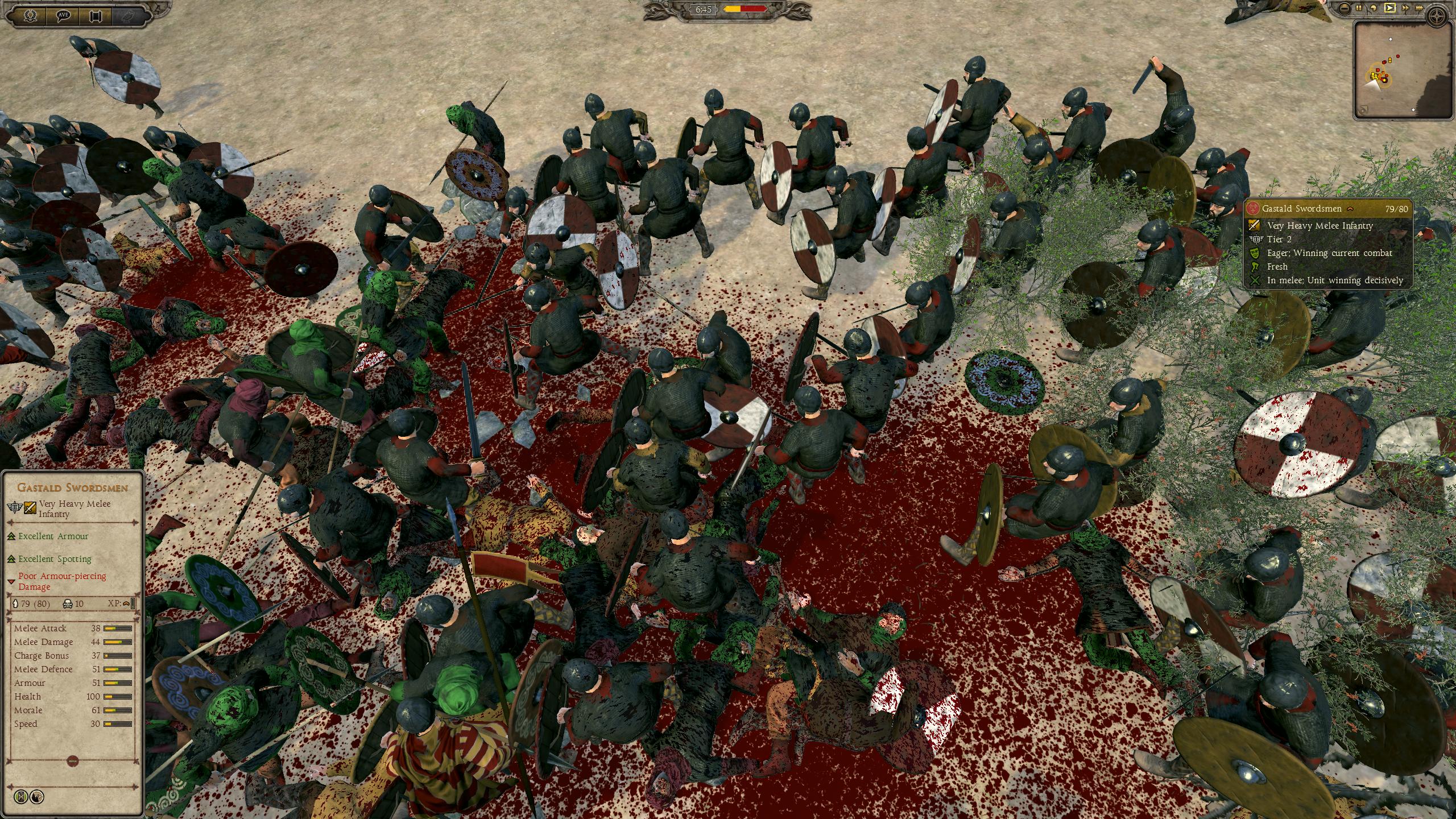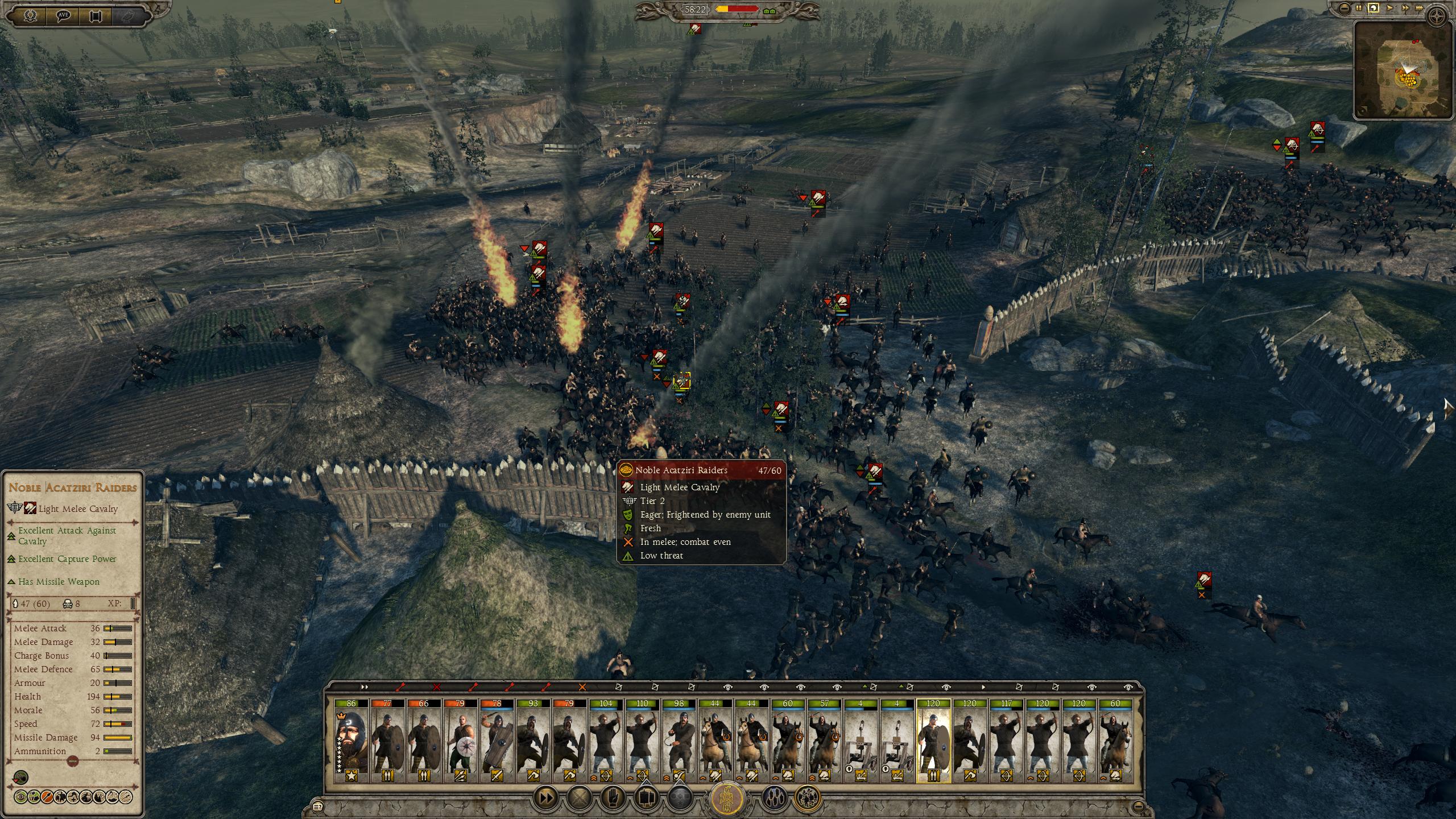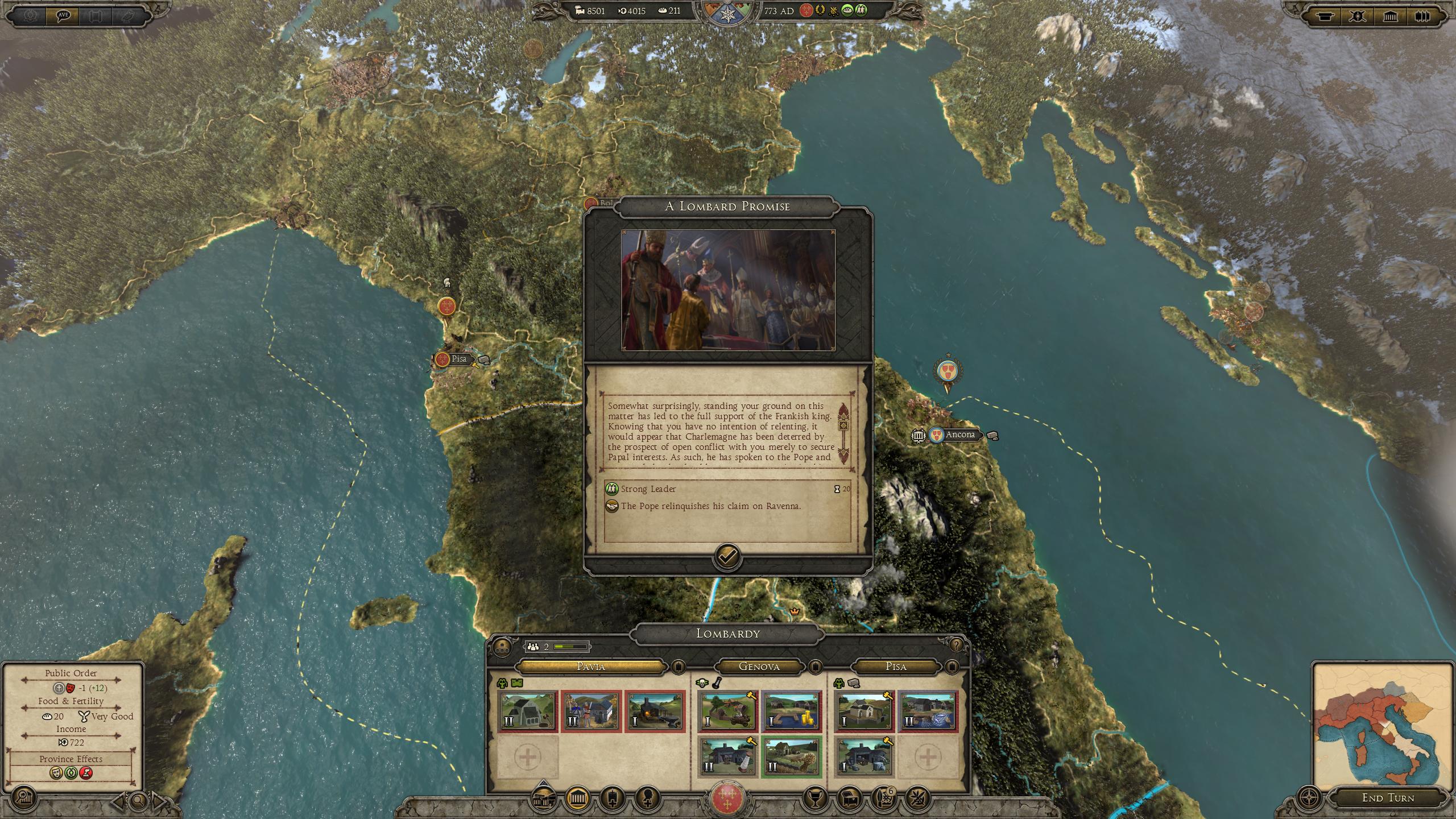
Attila may have hammered the last nail into the coffin of the Roman Empire, but the game that bears his name restored the Total War series to greatness. Attila, following on the heels of the bloated and at times incoherent Rome 2, could have gone in the same direction. But instead, it went in a far more daring and appropriate direction. It turned into a game about destroying traditional Total War.
When I revisited Attila's add-on campaign The Last Roman and tried out the Age of Charlemagne campaign, it felt like I'd fallen into a time-warp to 2003, when I played Medieval: Total War day and night to the detriment of sleep and school. Early morning gave way to lunchtime in a blur of hand-to-hand combat between thousands of medieval warriors, careful court politics, and the painstaking work of empire-building. When I went to bed at night, I was thinking about the offensive waiting for me the next morning.
It's not that Attila's a throwback to the good old days of Total War, however. It's quite the opposite. Typically, Total War follows a predictable arc: start small, make a few strategic expansions, leverage your newfound power into an empire. The trick is making sure you don't get knocked off-course by competing powers, but everyone is basically playing the same game.
Attila doesn't work like that. There's really only one faction that is still playing traditional Total War: the Sassanids in Persia. Everyone else is playing something new, and far more volatile, than a traditional Total War game.

The Romans are playing a survival horror horde-mode where their enemies will never stop coming and the protagonists are starting to fall to infighting. The internal politics that never quite came to fruition in recent Total War games, and were so abysmal in Rome 2, start to matter a great deal as successive Roman leaders struggle to maintain internal unity among generals and governors who all think they could do a better job.
The barbarians are in the early stages of a Civ game, exploring a dangerous new world and dueling for the best places from which to start a new empire. Cities burn, and depleted empires grapple with battered tribal armies for control over the ashes.
Nothing this dramatic ever happened before in Total War. Each of those games did a good job of making it look like the world was coming undone as armies fought pitched battles and cities and fortresses changed hands time and again. But all the damage was temporary and easily fixed. That city you burned to a cinder 5 turns ago? With a few easy investments, it was on the road to being a thriving trade and manufacturing hub!
Keep up to date with the most important stories and the best deals, as picked by the PC Gamer team.
Attila changes the rules. Barbarian factions can pack-up their entire nation and take to the road once again, leaving their permanent settlements a ruin behind them. Conquering armies have the option of annihilating cities and towns rather than occupying or looting them. As the number of settled regions decreases, and the wealth they created bleeds out of the game, the ability to recover and rebuild also starts to vanish.

By the time the Attila campaign grinds to a halt, the world has been transformed. Parts of it are ruined beyond repair, swaths of war-torn wasteland that used to be civilization.
Life after Rome
If the story of Attila had stopped there, it would have been an impressive reinvention for an old series. But the expansions continue to build on that foundation, each one capturing a new moment in the death of the Roman world and the transition into the Middle Ages. It also tells the story of how Rome goes from being a political reality to an increasingly vague notion of power, order, and progress.
The Last Roman campaign takes place almost seventy years after the fall of the Western Roman Empire, as the Byzantines hurl their waning strength and their greatest general into a doomed effort to recover the lost empire.
Once again, each side is playing a game according to different rules, but the situation is reversed. Now Belisarius and his Eastern legions are the outside invaders, moving like the barbarians of Attila once did, able to conquer but not to settle and build. The usurpers of Roman land have become settled kingdoms trying to build new societies, and it's the returning "Romans" who are the relentless, destructive outsiders.
Attila solved problems that have bedeviled Creative Assembly's games for years.
Age of Charlemagne ends the saga, and it's not quite as daring as the previous campaigns, but it's not supposed to be. Its structure hearkens back to the original Medieval Total War, where you have a group of fully-fledged, heavily-armed kingdoms all vying for supremacy. Nobody is starting from the bottom. Charlemagne is on the cusp of controlling the greatest Empire since the Romans. The Lombards occupy the old Roman heartland of northern and central Italy. The Caliphate of Cordoba is entrenched in Spain and technologically advanced compared to its neighbors. When these powers go to war, they're doing it with professional armies and vast wealth at their command. Just like the old days.
But things have changed. Age of Charlemagne borrows from the Paradox playbook by introducing two new concepts that tie into the diplomatic game. The first is scripted events that can have immediate ramifications for the strategic balance. Early in the campaign, the Lombards are pressed by the Pope to return the city of Ravenna to Papal control. To refuse is to risk war with the Franks and Charlemagne, but to comply is to cede an important imperial possession. The Lombards have to choose how to respond to this crisis, and what kind of risks they are willing to run.

If push comes to shove (and stab, and bludgeon), Age of Charlemagne doesn't want the action to become too much of a Dark Ages rugby scrum. A war that drags on and on with rising losses causes "war exhaustion." Public order declines, armies become demoralized, and nobles and retainers begin to think of treason. After fifteen years, "Total War" has finally found a way to control and contain its own anarchy, and turned the diplomatic game from a half-baked distraction into something that determines the structure of a campaign.
It's the Total War equivalent of spiking the football in the endzone. Attila began by reinventing Total War as we have always known it, using daring faction design and new game mechanics like razing settlements to bring the grim darkness of the fifth century to life. It ends with a campaign that is almost entirely traditional, closer to Shogun and Medieval than to Rome and Empire. Yet it solves problems that have bedeviled Creative Assembly's games for years.
Before Attila, the Total War series seemed like it might be out of ideas just as it was almost out of viable historical settings. It could refine old ideas but not substantially improve them. It could embrace new ones, but botch the execution so badly that the point was entirely lost.
Attila tore all that down. And at the end of the Age of Charlemagne, something new and exciting began rising to take its place.

